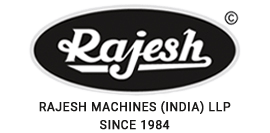
How to Choose the Right Power Press Machine for Your Production Line
How to Choose the Right Power Press Machine for Your Production Line
Previously manufacturing, having the right equipment directly impacts your production efficiency, quality, and profitability. One of the most critical machines in metalworking and fabrication is the power press. From sheet metal forming to blanking and punching, power press machines streamline production processes. However, selecting the right machine for your operations isn’t always straightforward. This in-depth guide will help you in choosing a power press machine that fits your production line requirements, performance goals, and budget constraints.
What Is a Power Press Machine?
A power press machine is a mechanical tool. We use a Power Press machine to shape, cut, punch, or form metal sheets into desired shapes. It operates with a die and punch mechanism to apply force on the workpiece. Power press machines available in various configurations—C-frame, H-frame, mechanical, hydraulic, and pneumatic. —each machine type serves different industrial applications.
Importance of Choosing the Right Power Press Machine
Choosing a power press machine tailored to your production needs ensures:
1. Higher productivity
2. Improved precision and quality
3. Reduced downtime and maintenance
4. Lower operational costs
5. Enhanced operator safety
Making the wrong choice, however, can result in inefficient production, frequent breakdowns, and unnecessary costs.
Key Considerations for Choosing Power Press Machine
Define Your Application Requirements
Before purchasing, evaluate what processes you will perform. Are you blanking, punching, bending, or drawing? For example:
1. Blanking requires high-speed and high-tonnage machines
2. Deep drawing benefits from hydraulic presses due to consistent pressure
3. Punching operations are suited to mechanical presses for faster cycles
Match the machine capabilities with your core application.
Evaluate Tonnage Requirements
Tonnage is the amount of force the machine can apply. Underestimating this metric can result in underperformance and damage. Use the formula: Tonnage = Perimeter of Cut x Material Thickness x Material Shear Strength Always add a safety margin of 10-20% above your calculated tonnage.
Consider Stroke Length and Shut Height
1. Stroke length refers to how far the ram moves up and down.
2. Shut height is the distance between the ram and bed when fully closed.
These measurements are crucial in choosing power press machines that can accommodate your die setup and product size.
Decide Between Mechanical and Hydraulic Presses
1. Mechanical presses offer faster cycles, better suited for high-volume production.
2. Hydraulic presses provide greater control, ideal for complex or deep forming jobs.
Analyze Bed Size and Frame Structure A larger bed size allows for bigger dies and more flexibility. Frame types:
C-frame: compact and suitable for lighter applications
H-frame: robust and stable for heavy-duty tasks
Choosing a power press machine with the right frame ensures long-term stability and precision.
Check Automation Compatibility If you’re planning to scale or integrate with automated systems, make sure the power press supports:
1. Programmable controls
2. Feeder and uncoiler compatibility
3. Safety light curtains and sensors
Safety and Compliance Features Choose a machine that meets OSHA, CE, or other relevant standards. Key safety features include:
1. Two-handed operation
2. Emergency stop buttons
3. Overload protection
4. Die safety blocks
Choosing Power Press Machine Based on Industry Use Cases
Automotive Industry Requires high-speed mechanical presses for punching and forming body parts. Machines should support progressive dies and high tonnage.
Electrical Enclosures and Appliances Mid-sized C-frame or hydraulic presses are ideal for their precision and repeatability.
Construction and Heavy Engineering H-frame hydraulic presses are better for structural components due to their tonnage and strength.
Small Job Shops Compact, energy-efficient power presses with basic automation features provide the best ROI.
Budgeting and Long-Term ROI in Choosing Power Press Machine
While upfront cost is important, consider Total Cost of Ownership (TCO):
1. Power consumption
2. Maintenance and spare parts availability
3. Downtime due to technical issues
4. Operator training
Investing in a slightly more expensive but reliable power press can reduce costs over time.
Final Checklist Before Purchasing
1. Have you calculated exact tonnage requirements?
2. Is the machine frame suitable for your workload?
3. Can it integrate with your current/future automation setup?
4. Are safety features and certifications in place?
5. Does the supplier offer after-sales service and spare parts?
Conclusion
Purchasing the proper power press machine has more to it than merely buying equipment; it also plays a crucial role in your efficiency, quality of product, and overall business success. By examining the specifics of your demands, your required tonnage, selected frame type and staying within the boundaries of safety requirements you can find a press with stable long term performance. Picking the correct power press suitable for your production needs is critical for improving efficiency, agility and profitability.

